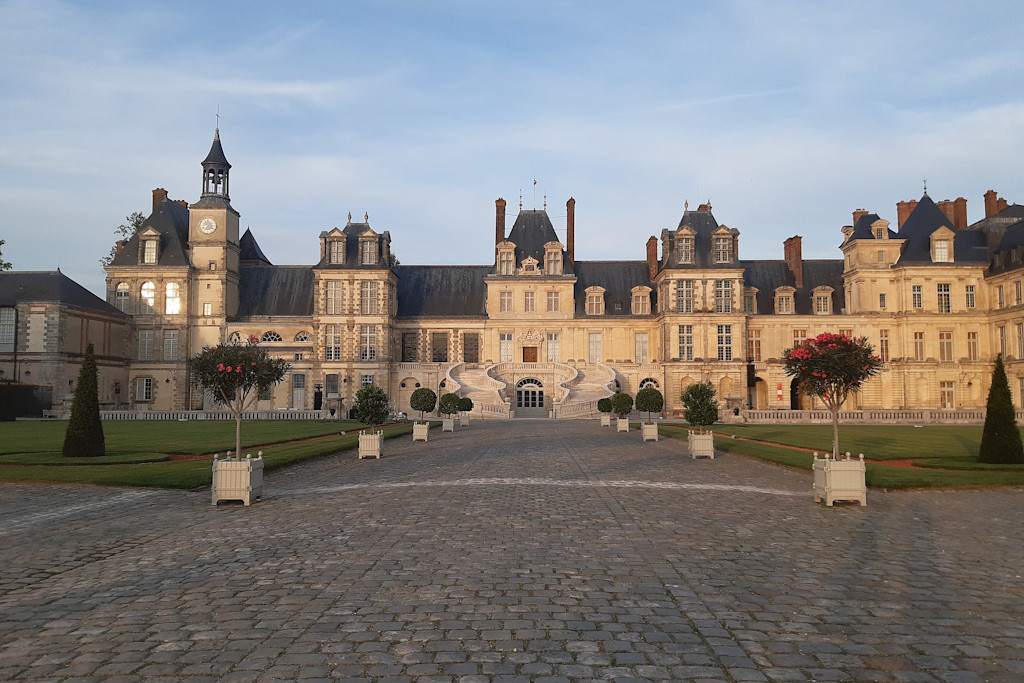
27 January 2024 | UNESCO
Fontainbleu Palace, south-west Paris
The Château de Fontainebleau, located in Fontainebleau, south-west Paris is surrounded by magnificent gardens of nearly 130 hectares, it is renowned for its beauty, and its very well maintained gardens and its fountains. Its 130 hectare estate deploys various buildings between four main courtyards, three gardens and a park.
The grounds over a vast expanse of greenery and offers visitors popular walks through shaded paths, groves, and landscaped areas. Laid out at different times, with varied influences and styles including elements of the French garden. Its current configuration, the organization of the network of waterfalls and star paths, results from the creation, under Henri IV, of a large canal nearly 1200 meters long and 40 meters wide.
The Grand Parterre:
It is a vast expanse of greenery, and offers visitors pleasant walks through shaded paths and groves. It is the largest in Europe with its 14 hectares.
The Carp Pond and its Pavilion
The Etang aux Carpes owes its name to the carps whose presence in Fontainebleau has been documented since Henri IV.
To the east, the waters of the pond are held back by a dike which was called "Chaussee de l'étang" before it was renamed "Allée de Maintenon".
In the 16th century, the 6-hectare pond was created in the Middle Ages to drain water from the gardens and served as a setting for the sumptuous nautical festivities of the Valois court. The half-timbered pavilion was built by Louis Le Vau under Louis XIV in 1662 and restored in 1807, during developments prior to the creation of the English garden.
Diana's garden
Formerly the Queen's private garden, it is bordered by the sovereigns' most intimate spaces. This garden was until the 19th century, closed by buildings whose destruction followed by the purchase of an additional strip of land. Redeveloped into an English landscaped garden, planted with remarkable trees such as a catalpa or a tulip tree.
English gardens
The English-style landscaped garden design is due to Hurtault, the architect of the main gate. Planted with rare species from all over the world and laid out with narrow and winding paths, it is crossed by an artificial river and still contains in its secret corners the "Belle-Eau fountain" whose source was highlighted by the sovereigns.
The Château de Fontainebleau and its grounds have a long history, dating back to the 12th century, and were frequently used by French sovereigns, from François I to Napoleon Bonaparte.
The park is open to the public, offering visitors the opportunity to discover the history and splendor of this exceptional site. As details may change, it is recommended to check the information on the castle and park website.